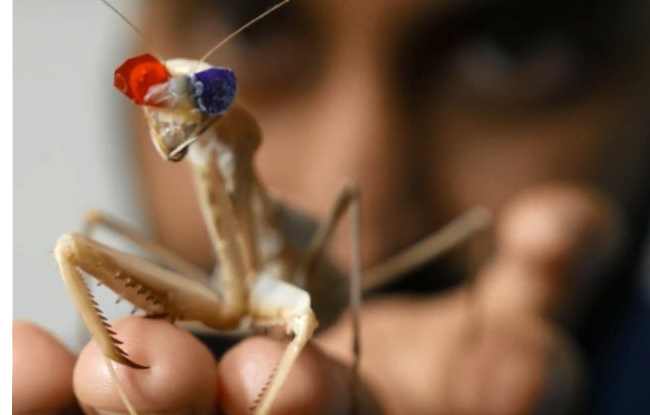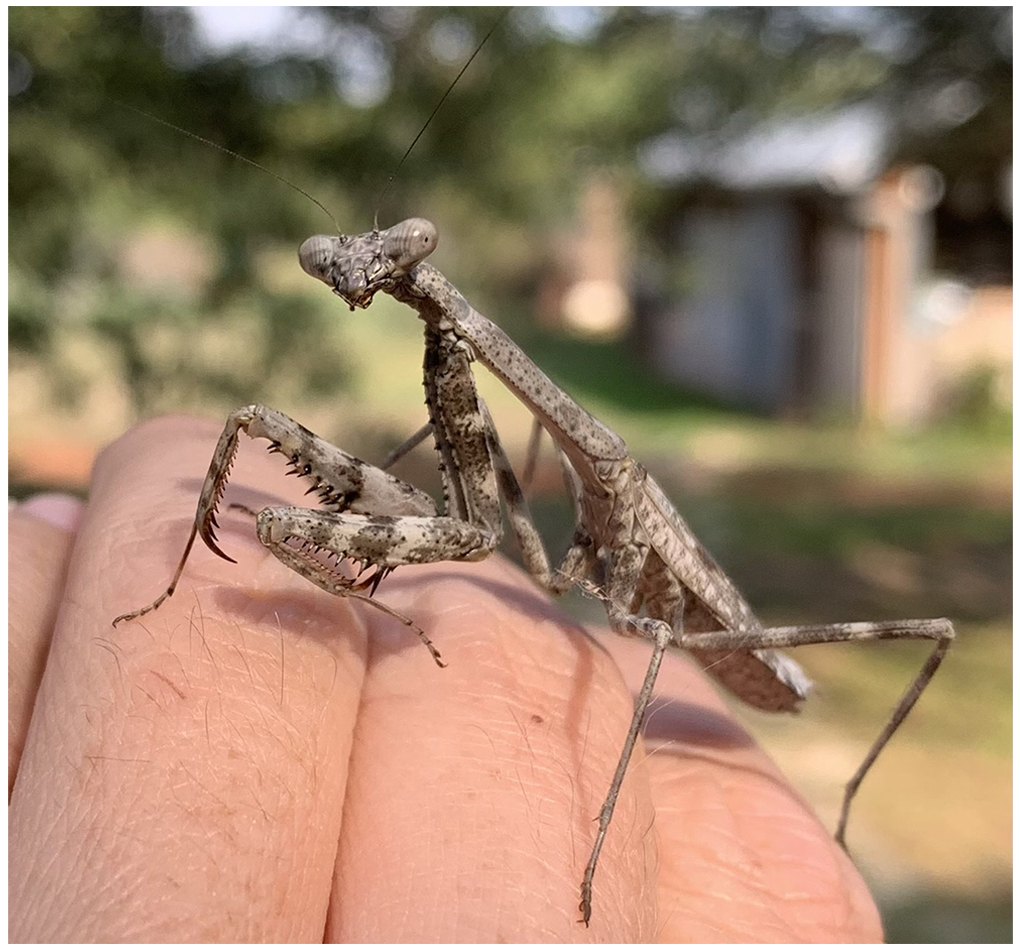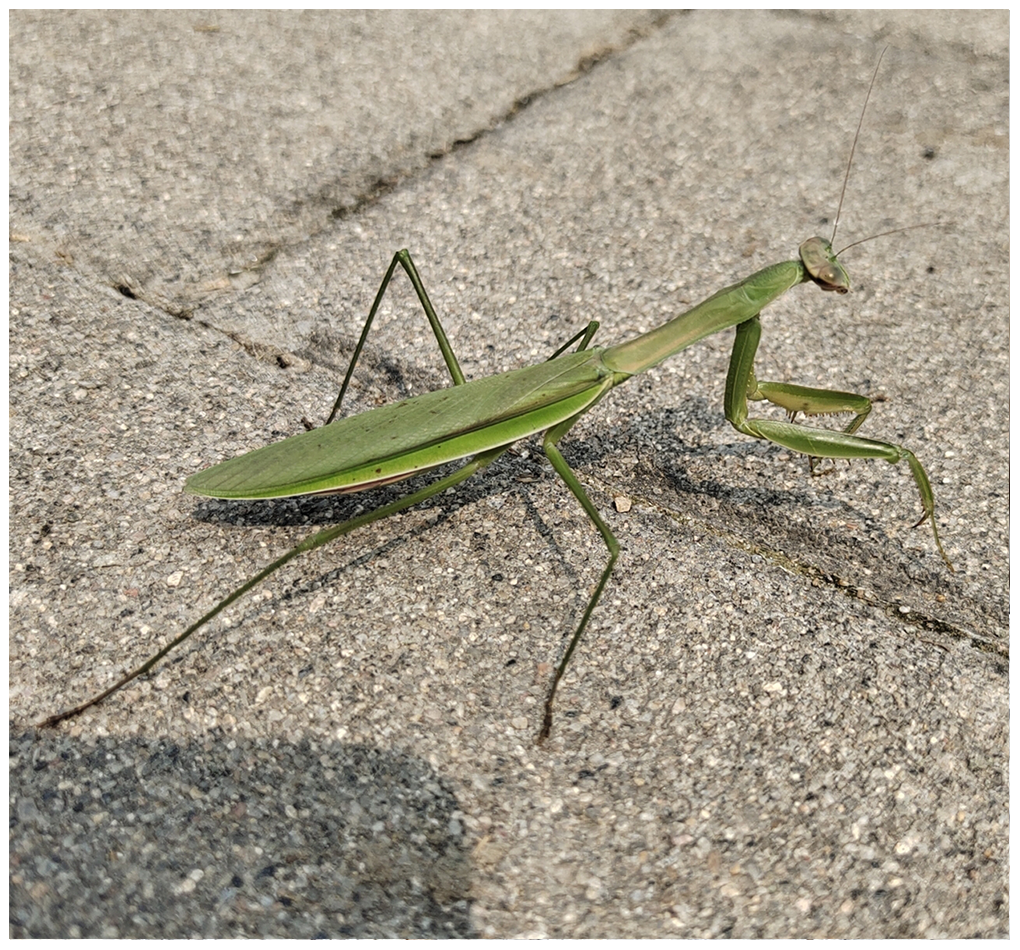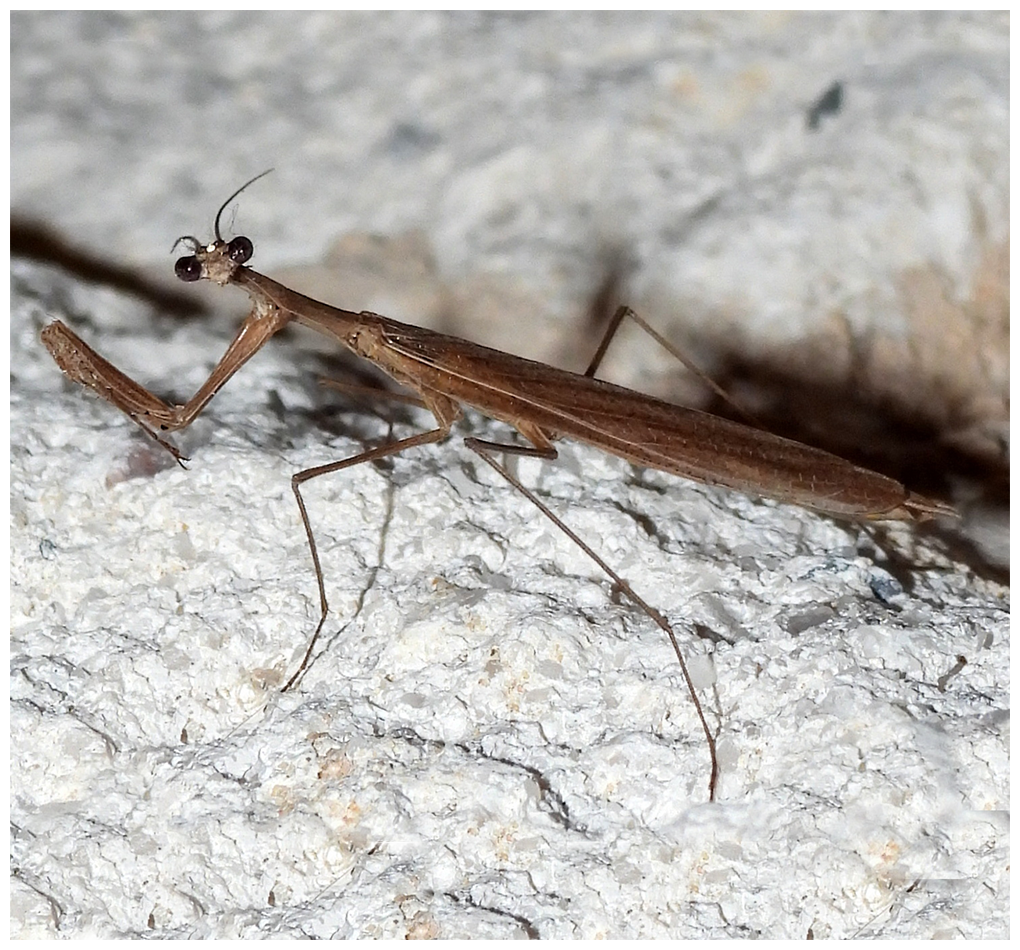ANR Blog
Contact
Jon Zawislak
Assistant Professor, Apiculture and Urban Entomology
Phone: 501-671-2222
Fax: 501-671-2252
Email: jzawislak@uada.edu
Office:
University of Arkansas
Division of Agriculture
Cooperative Extension Service
2301 S. University Avenue
Little Rock, AR 72204
Austin Jones
Instructor and Director of Undergraduate Education,
Entomology and Plant Pathology
Phone: 479-575-2445
Email: akj003@uark.edu
Office:
University of Arkansas
Dale Bumpers College of
Agricultural, Food, and Life Sciences
Entomology and Plant Pathology
PTSC 217
University of Arkansas
Fayetteville, AR 72701

Praying Mantids
Jon Zawislak
Praying mantises, or praying mantids, are a curious and cryptic group of insects that should be familiar to many gardeners and sharp-eyed outdoors enthusiasts. The order Mantodea, includes only the mantids, and is one of the few insect orders that consist entirely of predaceous carnivores. Many mantid species can be found around the globe, chowing down on other insects and arthropods, and even on some small vertebrates.
Even though all mantids prey on other species for their food, they are properly called praying mantises for the prayer-like positioning of their front legs. This devout posture contributed to their scientific name, from the ancient Greek word mantis, meaning prophet.
Their strong raptorial front limbs are equipped with numerous barbs and spines, making them perfectly suited for capturing and subduing struggling prey. These weaponized limbs are lightning fast and set on a hair trigger. When combined with their acute eyesight, mantids become formidable predators, even to creatures larger than themselves.

Exceptional vision
A mantid’s particularly keen eyesight is rare in creatures with compound eyes. They are some of the most seemingly aware of all insects, thanks to their highly articulate head and the appearance of pseudopupils – areas of the compound eye that absorbs light in a way that suggest a pupil, which give a mantid the appearance that it is staring right at you.
While this may be a curious illusion, recent experiments determined that praying mantids are among a minority or arthropods that posses a unique version of 3D vision and depth perception – useful for determining if a potential prey is close enough to grasp before they make a move. Scientists confirmed their theories by fitting mantids with tiny pairs of colored 3D glasses. They hope to use their understanding of mantid vision to develop better depth perception for robots and other machines with cameras.
What species of praying mantids are found in Arkansas?
Arkansas has several species of praying mantids, including the native Carolina mantis (Stagmomantis carolina), the introduced Chinese mantis (Tenodera sinensis), and the somewhat less-encountered native, Scudder’s grass mantis (Oligonicella scudderi).
The most abundant of these in Arkansas are the Carolina mantids which can reach a maximum size of just over than 2” in length, and are well-camouflaged in a wide range of colors from grey to brown or bright green. The males are typically more slender, and have larger wings in relation to body size than the females. Carolina mantids are considered highly beneficial insects in gardens and greenhouses. Immature mantids or their egg cases (called ootheca) are commercially available to place anywhere natural pest control is desired.
 |
| Carolina mantis (Stagmomantis carolina). Photo by Ryan Rash (CC BY-NC). |
Chinese mantids may be bright green or brown, and are thought to have been accidentally released at a nursery in Pennsylvania in 1896. Because they were considered beneficial, their eggs were quickly distributed to other growers in the Eastern United states. While young mantids can be voracious defenders in the garden, they do have some drawbacks.
When fully grown, an adult Chinese mantid can reach over 5” in length, and can will down many other beneficial insects such as native predators, pollinators, and even small vertebrates such as lizards and hummingbirds! These also tend to outcompete native mantids for resources, reducing the native populations. Chinese mantids are the only ones that reach such colossal proportions in the Natural State, with females usually being larger than males. Since they have long been fully established in North America, this introduced species can also be purchased for release, but the Carolina mantis is considered a much more beneficial and ecologically friendly option.
 |
| Chinese mantis (Tenodera sinensis). Photo by orientalstork (CC BY-NC). |
Scudder’s grass mantid, also known as slender prairie mantids, are a thinner, more stick-like and cryptic species that feel at home in native grasses, closer to the ground. The males, as with the other species listed, can be found coming to lights at night. However, unlike the other species discussed, these mantids are seldom seen much above grass height, and the females are flightless.
 |
| Scudder’s grass mantis (Oligonicella scudderi). Photo by Missy McAllister Kerr (CC BY-NC). |
Courtship ritual
Perhaps the most notorious trivia fact about these iconic arthropods is their brutal courtship ritual, during which the female mantis is purported to bite the head and other body parts off her mate and consume them while he continues copulating, apparently unphased. While this particular behavior has been documented, and remains a constant source of inspiration for cartoonists, its actual frequency is quite overestimated, and it does not occur in all species, nor does it happen every time.
Given the inherit danger of his dating scene, perhaps we can imagine what the male praying mantis might be praying for. But in reality, being eaten under these circumstances may not be the worst outcome. A praying mantis will only live for a single season in a temperate climate. By providing his lady love with a healthy dinner, the male mantis contributes important nutrients to her, which are incorporated into her egg production.
Females who ingest their mates can produce up to twice as many eggs than they otherwise would. Therefore, by literally giving himself to his mate, his genetics have a much higher chance of passing on to future generations. His loss is his children’s gain.
All praying mantis species are formidable ambush predators.
These masters of disguise rely on their coloration and slim body shape to camouflage their presence on tree bark or vegetation, while they wait patiently for unsuspecting prey to approach them unaware. If you spot one in the wild, keep your distance and observe it for a few minutes. They can remain perfectly still for long periods, but will often sway gently back and forth, as if they are nothing more than a twig or leaf in a gentle breeze.
They use this gentle motion to disguise the fact that they are actually sneaking incrementally closer to potential prey before they strike. And once they do, their hapless prey has little hope of escaping their powerful clutches. Stealthy and implacable hunters, praying mantids are indeed the ninjas of the insect world.
Addional Resources:
- Wikipedia article about praying mantis
- Science Alert - 3D glasses
- National Geographic - Praying Mantids
- YouTube Video - Courtship of Praying Mantids

